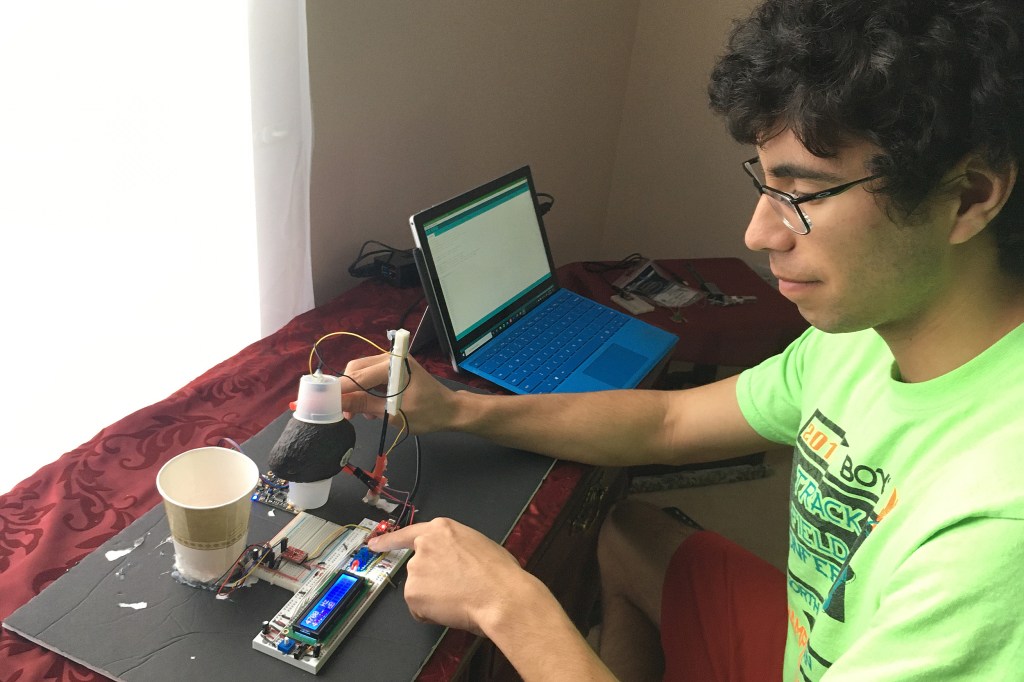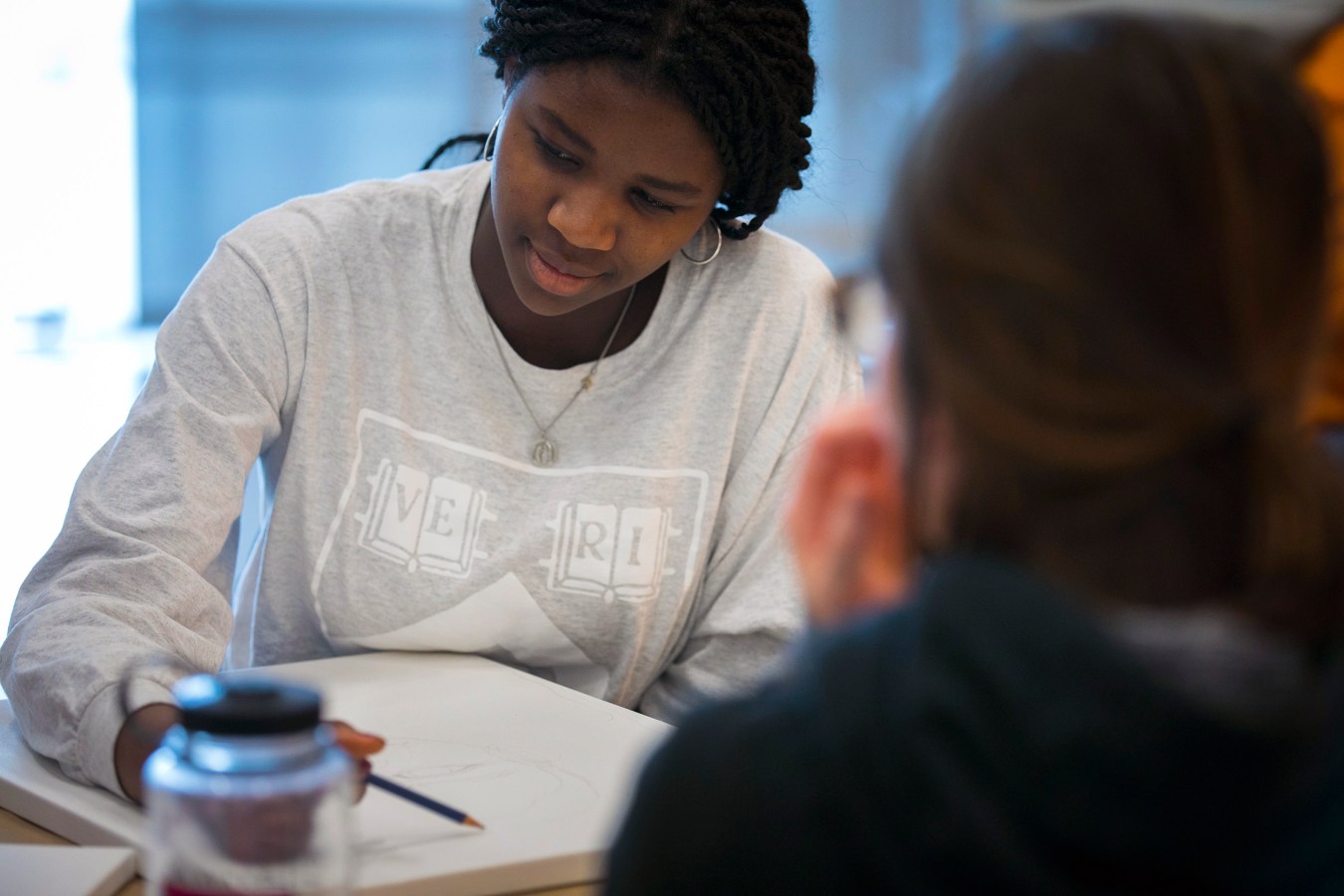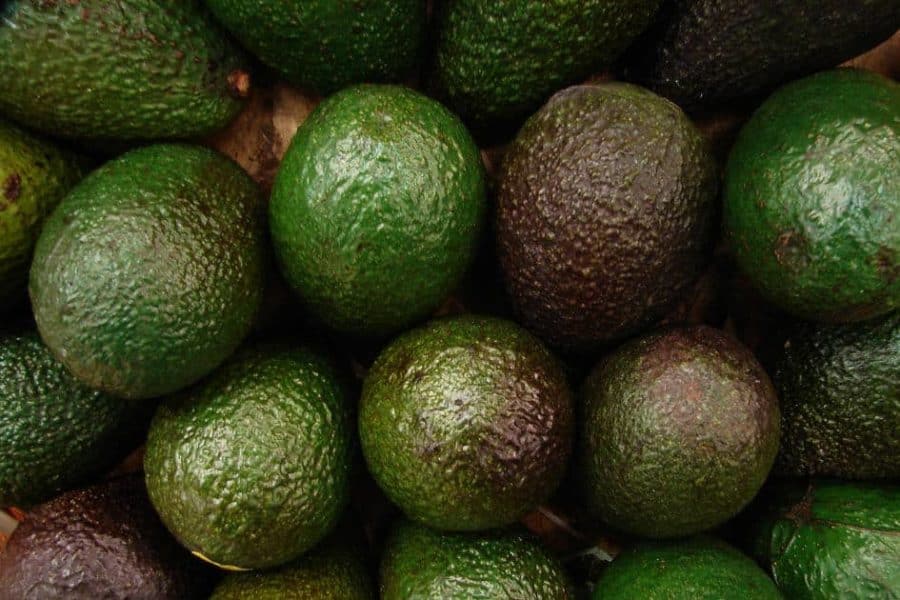Each year, about 40 percent of all food in the U.S. goes uneaten. That means Americans throw away $165 billion worth of food that could been used to make more than 58 trillion meals, according to the National Resource Defense Council (NRDC).
A team of Harvard John A. Paulson School of Engineering and Applied Sciences students tackled this complex problem as their project in “Engineering Problem Solving and Design Project” (ES 96), which challenges students to use engineering design skills to create a solution for a real-world client. They partnered with Savormetrics, a predictive food safety startup, to develop a product that could help reduce food waste. The juniors in the course, who represent all five engineering concentrations, collaborate to design and drive the entire project.
After studying the supply chain, the students chose to focus on food waste at the retail level. Grocery stores and distributors are responsible for about 13 percent of all food waste, with produce comprising an outsized portion, the NRDC reports.
Overstocking is one reason so much produce is wasted in grocery stores. Consumers are drawn to abundant displays of produce, but since the appearance of that produce declines as it becomes overripe, much is discarded before it can be purchased.
“In order to prevent produce from being discarded, what we need is metrics in order to know which produce are going to ripen faster,” said project co-lead Mark Meneses ’21, an engineering sciences concentrator. “How can we use metrics to drive retailer action in reducing food loss and waste?”

John Schmidt working with the avocado test integrating instrument.
Photo courtesy of SEAS Communications
To generate those metrics, the students developed a multi-sensing device that could predict when produce would ripen. They focused on avocados, since the fruits have a high price and high market value — about $2.28 billion per year in the U.S. — with about a 10 percent annual growth rate in the market.
“Saving just a few avocados could help justify the price of our device,” said Joseph Sanchez ’21, a mechanical engineering concentrator.
The device they developed incorporates sensors to measure certain chemical properties of an avocado.
Information from these sensors is incorporated into a machine-learning model the students developed to predict when an avocado will be ripe. The model’s output is displayed through an app that shows the estimated date of ripeness and the number of days until each tested avocado will be ripe for.
The app also allows users to view batch stats on avocados that were scanned together, providing information on the average days until avocados in that group will be ripe, and also a graph that shows the count of avocados at each of five stages, from hard to overripe.

Juliet Nwagwu Ume-Ezeoke, one of the team members on the project.
Stephanie Mitchell/Harvard file photo
“Ripeness prediction is really difficult for avocados, and because they are so valuable, it is really a critical point for retailers,” said Juliet Nwagwu Ume-Ezeoke ’21, a mechanical engineering concentrator. “We hope this information would allow retailers to take very decisive actions.”
For instance, retailers could advertise the ripeness states of avocados so consumers can make more informed produce purchasing decisions. Retailers could also set different prices for different levels of ripeness, or change store displays so the ripest avocados are at the front.
The biggest challenge the students faced resulted from the University’s transition to remote instruction in mid-March — right in the middle of their project. After they left campus, the members of the sensor development team were forced to individually assemble sensors and then ship them to teammate John Schmidt ’21, a mechanical engineering concentrator, who faced the burden of assembling the device and testing 80 avocados on his own, said project co-lead Jonas LaPier ’21, an environmental engineering concentrator.
And a sudden sensor malfunction during testing threatened to derail the entire project, but the students were able to get a new part shipped the next day.
Despite those challenges, the students created an effective prototype — 60 percent of the estimates were accurate to within one day, with an additional 30 percent accurate within two days.
“The predictive model worked fairly well, which was great to see because we really weren’t sure with all of the moving parts in our project. The success of the modeling was contingent on our sensing approach and our avocado testing procedure which were both difficult to implement,” said LaPier. “I was consistently surprised by the hard work and exceptional skills that my fellow engineers brought to our team. There was never a point where we couldn’t count on someone to finish a task and move us all forward.”
Instructor Nabil Harfoush, visiting associate professor, was impressed by the determination the students showed to complete the project, even in the face of the unprecedented challenges they faced during the spring term.
“My hope is that students learned how to dwell more in the problem space before jumping to solutions, how to engage collectively with a complex problem, and what aspects and perspectives must be considered beyond technology in a real-world project,” he said.
Harjeet Bajaj, president and CEO of Savormetrics, was also impressed by the students’ work.
“Savormetrics will be polishing this off and bringing this product into market. I am very surprised at the efficacy of the students on our project,” he said. “Kudos to Dr. Harfoush and Dr. [Fawwaz] Habbal. We are planning on presenting a stock option opportunity to the students to bring this product to market, by providing them access to our office in Boston and other resources.”


